The Homo lineage created the savanna, rather than the other way around
The coast-line on Danakil where both the Australopithecus and Paranthropus genus speciated, would have been different from the surrounding regions in that it was an open landscape, where the field of vision stretched across the Sea of Afar, with the mountains that made up most of Danakil as a frame to the north, north east, and south.
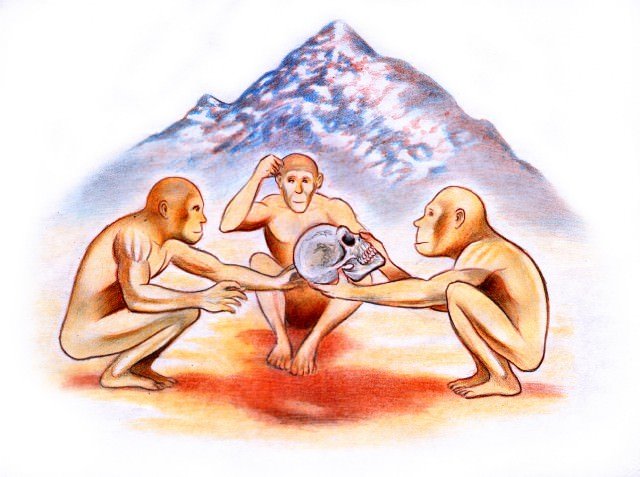
Australopithecus would in that sense have been adapted for an open grasslands ecosystem, as “beach apes” that foraged shell fish from the coast line on south western Danakil. As the pliocene flood basalts ended the isolation of this “galapagos of the great apes”, the Australpithecines settled by lake Turkana, some 1000 km to the south-west, and began to speciate into Homo.
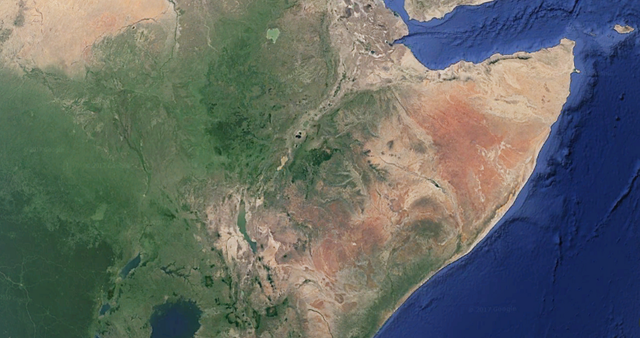
The trail of memetic cognition, aridification and wildebeests
In the absence of an open grasslands landscape, the Australopithecus, a memetic species from their loss of olfaction at 3.86 million years[1] before the present, as well as adaptations for volitional control of breathing[2], with attentional modulation as a byproduct, had the capability to manipulate their environment, to make the ecology at lake Turkana adapt to them.
The earliest fossil evidence for the presence of the genus Connochaetes is C. gentryi (Harris 1991) from the Upper Lomekwi Member of the Nachukui Formation, West of Lake Turkana dating to between 3.0 to 2.5 million years ago (Harris et al. 1988; Harris 1991).
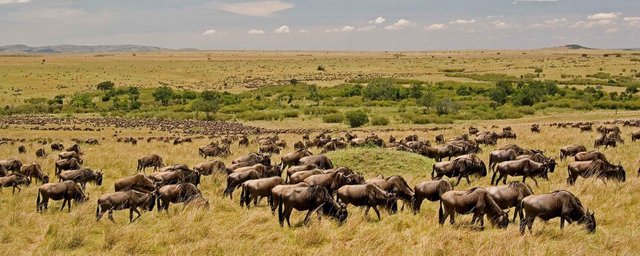
The evolution and dispersal of the typically African alcelaphine bovids and the dispersal and speciation of taxa of non-African origin, such as the zebras, are linked to the aridification of the southwest, the northeast and the north of Africa, centres of endemism for arid and semi-arid adapted forms.
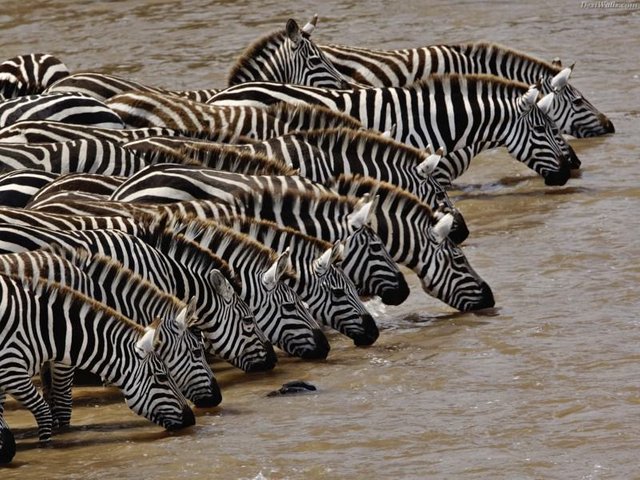
Volcanoes and fire, cooking, and aridification
Vast lava flows may have provided humans with access to heat and fire for cooking their food millions of years ago. The same tectonic events that forced Australopithecus away from Danakil, also opened up conditions for the continued evolution of the human lineage, with fire being widely accessible from volcanoes at lake Turkana.
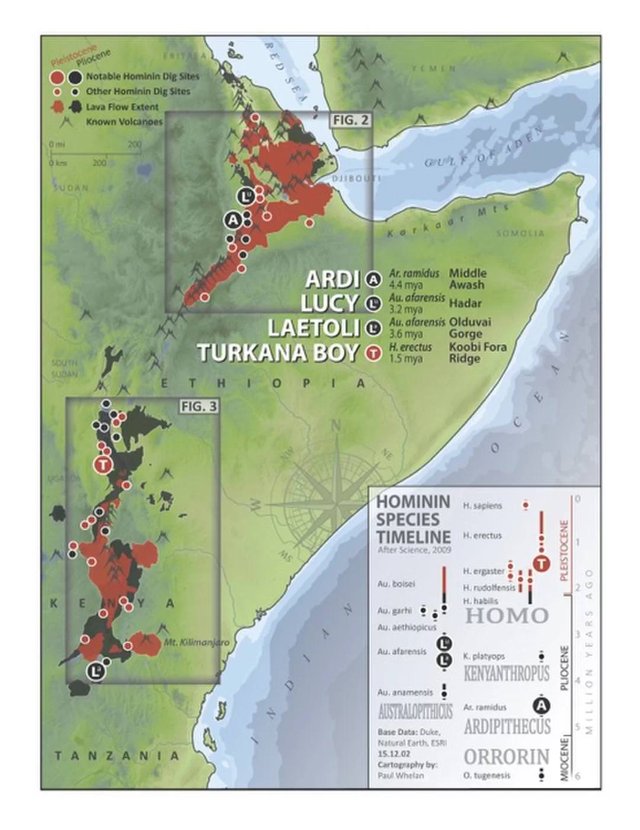
References
A comparison of the human and chimpanzee olfactory receptor gene repertoires (2005)
Breathing above the brainstem: Volitional control and attentional modulation in humans (2017)
The remote lake that tells the story of humanity’s birth (2015)
Turkana and the Dawn of Man (2016)
Volcanoes Sparked an Explosion in Human Intelligence, Researcher Argues (2015)
Notes
The mechanism of Nothobranchius diversification was allopatric and driven by geographic isolation. We propose a scenario where diversification of Nothobranchius started in rough coincidence with aridification of East Africa, establishment of grassland habitats and the appearance of the typical African bovid fauna of the savannah.
Savannas are subject to regular wildfires and the ecosystem appears to be the result of human use of fire. For example, Native Americans created the Pre-Columbian savannas of North America by periodically burning where fire-resistant plants were the dominant species
https://en.wikipedia.org/wiki/Savanna#Changes_in_fire_managementMan-made fire has been such a universal factor in savanna ecosystems for so long that it is often impossible to determine how much of the African savanna is the result of human impact. Until recently, it was generally accepted by ecologists that, in the absence of expert supervision, human influence in the form of burning, cutting, stock grazing, and cultivation has almost invariably been in the direction of downgrading the environment from complex to simple communities, turning forest into scrub or savanna, moist savanna into arid savanna, and arid savanna into subdesert scrub. In other words, human influence has been considered to degrade habitats. Some ecologists have gone so far as to argue that practically all African grasslands have been created and maintained by humans, primarly through fire.
Fossilized traces of the horse, which was named Eurygnathohippus woldegabrieli, were uncovered in the archaeologically rich sites of Aramis and Gona in Ethiopia's Middle Awash valley. The region is famed for bearing the world's longest and most continuous record of human evolution. The extinct horse in this study would have actually been alive at the same time the 4.4-million-year-old human ancestor Ardipithecus ramidus, or "Ardi," walked the region. [Beasts of Burden: Amazing Horse Photos]
The species was estimated to be about the size of a small zebra, and had three-toed hooves.[1] Tooth wear patterns and analyses of bone composition indicate that E. woldegabrieli grazed on grasses similar to the coarse C4 diet of modern zebras or wildebeests.[2] Compared to ancestral Eurygnathohippus horses of six to ten million years ago such as the late Miocene E. feibeli, which lived and ate in forests, E. woldegabrieli's teeth were taller and more worn, and its longer and thinner leg bones suggest that it was well adapted for running.[2] The medial Pliocene species E. hasumense, a more advanced horse from 3.5 million years ago and forward, is both taller and has a longer nose than E. woldegabrieli, a further advanced adaptation toward living in open grasslands.[1][2]
great and interesting post,,,,,,,,,,,,
thanks for this information.........//////////
so that' s how it came into existence
Possibly, both the Zebra and the Gnu come from that region, the zebra being descendant of Hipparion affarensis that adapted to open grasslands and to eat grass on Danakil, and the Gnu (Connochaetes) having the oldest fossils at lake Turkana. Of course it could be climate changes as well, but that an open grasslands animal that also happened to have memetic cognition and abundant access to fire as a natural resource from volcanoes just happened to exist where the savanna formed as "centers of endemism for arid forms", with a cousin species, the Paranthropus, being a grazer as well, and there being lots of recent history examples of humans downgrading the environment from complex to simple communities, turning forest into scrub or savanna and so on, to me it seems like early Homo could have been what caused savanna, rather than the other way around. I also love that idea, because it is beautiful somehow. If nothing else, just from migrating and bringing fire from the natural resource (volcanoes) along with them, and keeping the fires alive, would increase the incidence of wild fire in the region around Turkana, including Serengeti.
Well all of the information that you had given hair is rare to see and from where you are getting these information . Great content .
It´s derived from my observation from a few months ago that humans originate from Danakil, which in turn builds on Elaine Morgan´s ideas from the 90s, and there have been others who have put forth that idea as well. What I have done is to build a tectonic model for how Danakil became a sort of "Galapagos of Pliocene East Africa", as well as how the fossil record has been deposited continuously from the coast-line of Danakil as the block rotated in a counter-clockwise direction.
In other words, based on tetonics, it is certain that the Danakil block would have deposited coastal layers into the Sea of Afar, it is bound to have happened just based on erosion happening in the direction opposite of the rotation, and that then explains the thin layers of sand stone in for example Hadar, where the vertebrate fossils are found (including Lucy. )
That then, explains a lot of other things.
Hay really nice and I must do appreciate your work.